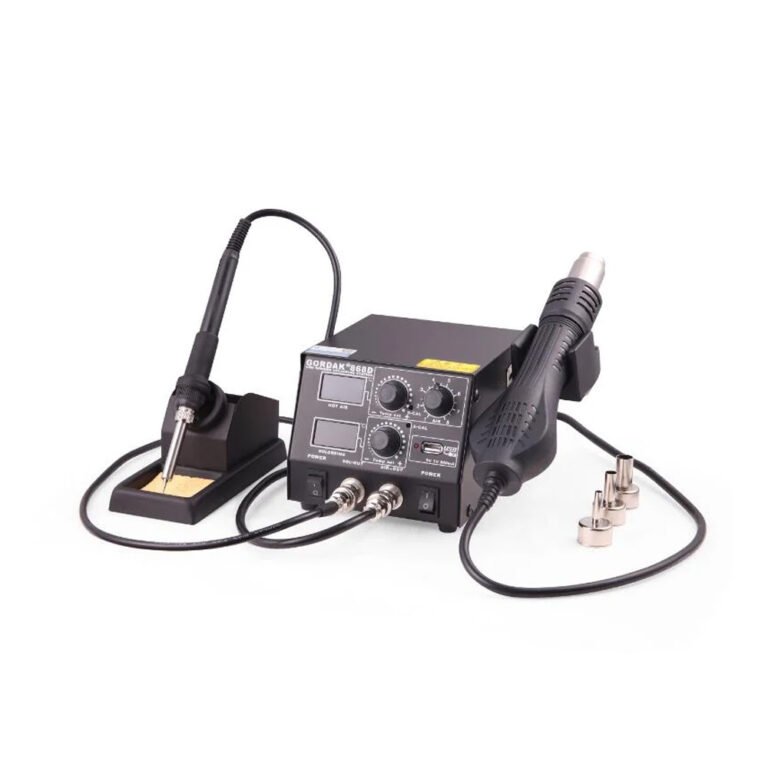Proper temperature control is one of the most important factors in successful soldering. Using the correct temperature ensures strong solder joints, prevents component damage, and reduces the risk of cold or burnt connections. This guide provides temperature guidelines for various soldering applications, from through-hole electronics to delicate surface-mount devices (SMDs).
1. General Electronics Soldering
- Through-Hole Components: 300–350°C
- Purpose: Standard resistors, capacitors, microcontrollers, and other through-hole components.
- Tip: Use a fine or chisel tip for precision and clean heat transfer.
2. SMD Component Soldering
- Small SMDs (0603, 0805, etc.): 320–350°C
- ICs (QFP, PLCC): 330–370°C
- BGA Chips: 350–380°C (preferably with hot air or rework station)
- Tip: Apply flux generously to improve solder flow and reduce the risk of cold joints.
3. Lead-Free Soldering
- Melting Point of Lead-Free Solder: 217–227°C
- Recommended Soldering Temperature: 350–370°C
- Tip: Lead-free solder requires slightly higher heat than leaded solder. Avoid excessive heat to prevent PCB damage.
4. Rework and Repair Applications
- Component Removal with Hot Air: 300–380°C depending on component type and size
- Solder Paste Reflow: 230–250°C for lead-free, 180–200°C for leaded solder
- Tip: Gradually heat the board to avoid warping or lifting pads.
5. Specialty Applications
- Copper Wire Soldering: 350–400°C depending on wire gauge and insulation type
- Jewelry or Metalwork: 400–450°C depending on metal type
- Tip: Use appropriate solder and flux to ensure proper bonding.
Best Practices for Temperature Control
- Always Preheat Sensitive Boards: Reduces thermal shock and protects components.
- Use a Temperature-Controlled Soldering Station: Maintains consistent heat for precise soldering.
- Monitor Tip Condition: Clean and tin your soldering tip regularly to ensure efficient heat transfer.
- Avoid Excessive Heat: Prolonged high temperatures can damage the PCB and components.
- Use Flux Appropriately: Helps solder flow at lower temperatures and improves joint quality.
About GORDAK
Gordak is a leading manufacturer of soldering and rework equipment, providing high-quality, reliable, and innovative tools for electronics professionals worldwide. With over 30 years of industry experience, Gordak combines advanced technology, precise temperature control, and ESD-safe designs to meet the needs of SMD and through-hole soldering applications. Committed to excellence, Gordak offers affordable solutions, responsive customer support, and products trusted by clients across the globe.
Soldering Tips & Techniques
The Best Soldering Tips for Electronics and PCB Work
Choosing the Right Soldering Tip for Precision Work
Temperature Guidelines for Different Soldering Applications
What Are Categories of Soldering Iron Tips



